

 |
Crystal Structure Representation |  |

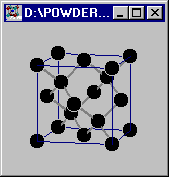 As one of the most important advantage of PowderCell we feel the simultaneous representation of crystal structure and corresponding powder diffraction pattern. However, the substance of the program should not be the creation of high-qualitative structure pictures. It only should be an useful tool for a visible structure manipulation (generation of sub- and supergroups, edding the structure data etc.) and shall support the intuitive generation of structure models for further refinements. Therefore the structures will be drawn on screen in a relative simple manner.
As one of the most important advantage of PowderCell we feel the simultaneous representation of crystal structure and corresponding powder diffraction pattern. However, the substance of the program should not be the creation of high-qualitative structure pictures. It only should be an useful tool for a visible structure manipulation (generation of sub- and supergroups, edding the structure data etc.) and shall support the intuitive generation of structure models for further refinements. Therefore the structures will be drawn on screen in a relative simple manner.
However, there exist a lot of different representation options. So it is possible to turn the crystal structure around 3 axis. The rotation angle is free of choice. Furthermore, the program creates mono as well as stereo pictures (by choice for parallel or cross looking). The user is able to change between parallel or central perspective, where the degree of perspective can be changed (see the screen copy at the right side). Additionally, it is possible to display the content of the unit cell, more than a single cell volume, but also only the asymmetric unit used. Of course, cell edges or a small coordinate system which shows the directions of the basis vectors may be inserted. To be familiar with the structure all atoms may be labeled by the used identifier. Furthermore the bonding length can be displayed for each bond.
The operation of these representation functions is very easy using the mouse pointer and the toolbar shown on the left side of this screen. The images on the buttons describe the corresponding actions.
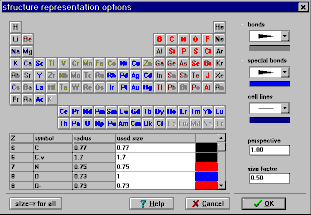
But also the colors of atoms, bonds and cell edges can be selected using the menue displayed at the right side of this screen. There also the radii of predefined atoms or ions can be chosen. Unfortunately, other ions as the predefined cannot be used because only for this the corresponding parameters (atomic scattering factor, anomaleous dispersion etc.) are available.
With the help of a proportional factor the size of the atoms or ions can be influenced.
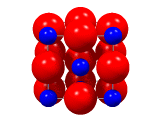
As mentioned above a photo-realistic representation never was the aim of PowderCell. Nevertheless, as you can see on the pictures on the homepage or on the small video sequence shown here the program seems to offer any other possibility to generate much nicer pictures than the original screen displays. The solution of the mystery is that PowderCell is able to export POVRay files. This is a raytracing program (freeware) which generates photo-realistic scenes from the exported scripts. However, also PostScript or Windows Metafiles may be exported. These pictures are more simplier but use a vector description. Therefore, one can zoom this as requested without the loose of details whereas POVRay generates truecolor bitmaps, exclusively. Indeed, there are no limitations regarding the resolution of the bitmaps. The following displayed structures (thumbnails) are calculated using POVRay and have been converted into JPEG (35-65 KByte). Thus, the sizes of the files are much smaller than the original TGA's.
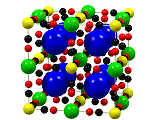
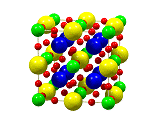
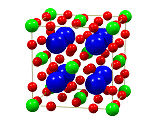
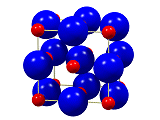
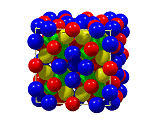
Federal Institute for Materials Research and Testing
Unter den Eichen 87, D-12205 Berlin,
Germany